Looking for a smartwatch that can also double as a serious fitness tracker? The Apple Watch has become one of the top choices for people who want to move more, track workouts, and keep an eye on overall health. It’s not just a stylish gadget it’s packed with tools designed to help you stay on top of your fitness goals.
With features like cardio fitness tracking, heart rate monitoring, sleep insights, and customizable goals, the Apple Watch goes beyond step counting. Add in its massive ecosystem of fitness apps and seamless iPhone integration, and you get a device that’s as flexible as it is powerful.
But here’s the big question: Is the Apple Watch the best fitness tracker for you—or are alternatives like Fitbit or Garmin a better match? In this review, we’ll break down what the Apple Watch does well, where it falls short, and how it stacks up against other leading fitness trackers.
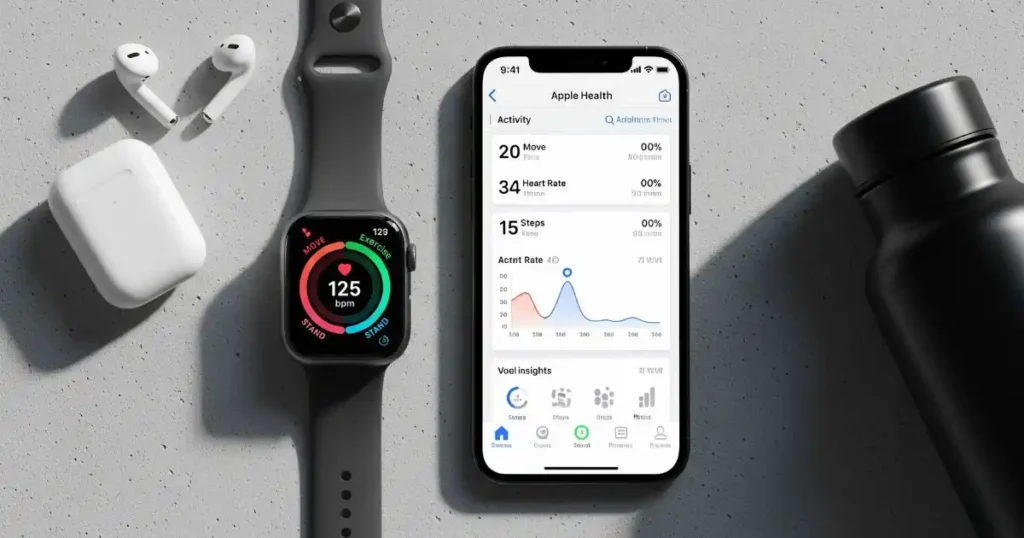
What You’ll Learn
Key Fitness Tracking Features of Apple Watch
Apple designed its watch to be more than just a timepiece. The built-in fitness tracker for Apple Watch integrates seamlessly with your iPhone’s Health app, giving you detailed insights into your overall well-being.
Here’s what you get:
- Daily Activity Rings – The famous Move, Exercise, and Stand rings keep you motivated to stay active throughout the day.
- Heart Rate Monitoring – Continuous heart-rate tracking with alerts for unusual spikes or drops.
- Cardio Fitness & VO₂ Max – Apple Watch estimates your VO₂ max to measure aerobic capacity. A low cardio fitness Apple Watch alert can indicate you need more consistent activity.
- Workout Tracking – Over 90 workout modes, including running, HIIT, swimming, yoga, cycling, and even functional strength training.
- Sleep Tracking – Tracks sleep stages and helps you improve recovery.
- Integration with Apple Fitness+ – Guided workouts, meditation, and real-time metrics.
Explore Apple’s official fitness tracking support page for setup and tutorials.
Apple Watch Cardio Fitness – Why It Matters
One of the most valuable features is Apple Watch cardio fitness tracking, which measures your VO₂ max. This metric reflects how efficiently your body uses oxygen during exercise—a key indicator of cardiovascular health.
- What it means: Higher VO₂ max = stronger endurance and better heart health.
- Why it matters: Low cardio fitness has been linked to increased health risks.
- How Apple Watch helps: The watch uses your heart rate and activity data to estimate your score and notifies you if your fitness is below average.
While researching I got Mayo Clinic explains the benefits of improving cardio fitness.
Fitness Tracking Accuracy – Apple Watch vs Competitors
When comparing fitness tracking with Apple Watch to other devices like Garmin or Fitbit, here’s how it stacks up:
| Feature | Apple Watch Series 9 | Garmin Forerunner | Fitbit Sense |
| Heart Rate Accuracy | Excellent | Excellent | Good |
| Cardio Fitness (VO₂ Max) | Yes | Yes (more detailed) | Limited |
| Workout Modes | 90+ | 50+ | 40+ |
| Battery Life | ~18 hours | 7+ days | 6+ days |
| Health Apps Integration | iPhone only | iPhone/Android | iPhone/Android |
However, for professional athletes, Garmin may still be the better choice thanks to its ultra-detailed recovery data and impressive battery life. If you’re looking for something more budget-friendly, Fitbit provides a solid range of fitness features, but it falls short when compared to Apple’s premium ecosystem and advanced capabilities.
Apple Watch Fitness Tracker Review (2025): Expert Breakdown
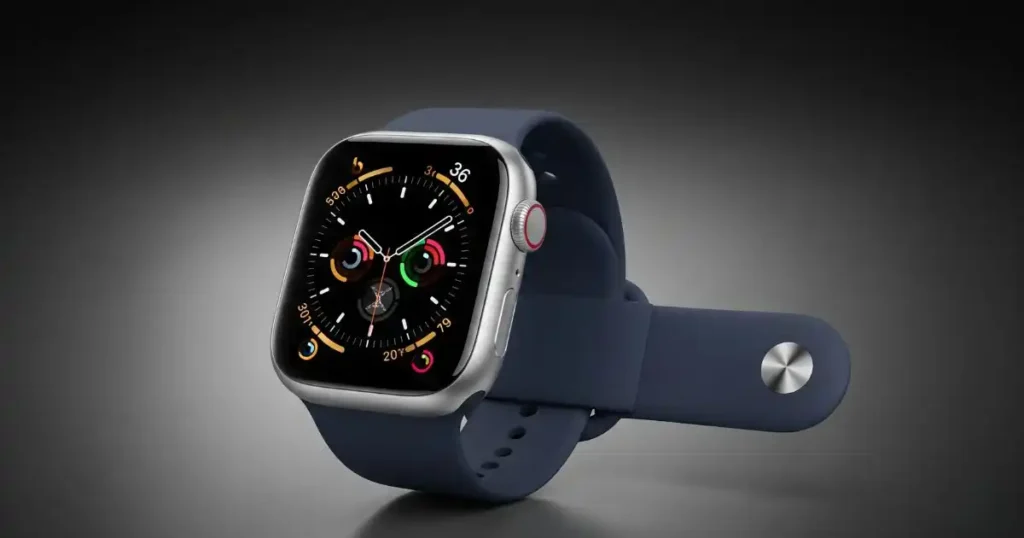
The Series 9 is the best all-around choice for most people. It includes Apple’s latest health sensors, advanced cardio fitness tracking, and smooth integration with the Fitness app and Apple Fitness+. It’s ideal if you want the perfect balance of features, performance, and style without going over the top.
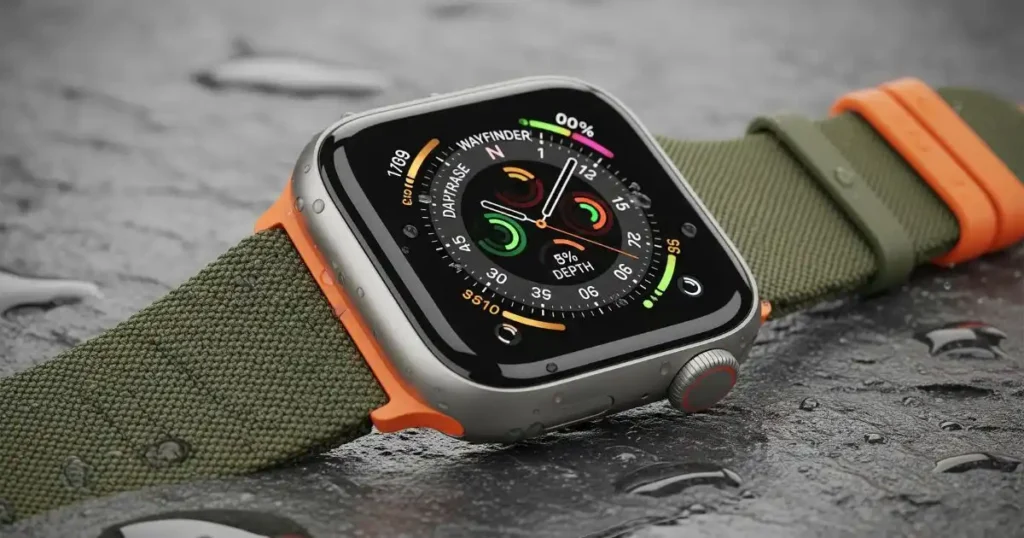
If you’re serious about endurance sports, outdoor training, or extreme fitness challenges, the Ultra 2 is built for you. With longer battery life, precision dual-frequency GPS, and advanced workout metrics, it’s designed to handle intense activities like hiking, diving, or marathon running. Think of it as the ultimate Apple Watch fitness tracker for pros and enthusiasts who demand more.
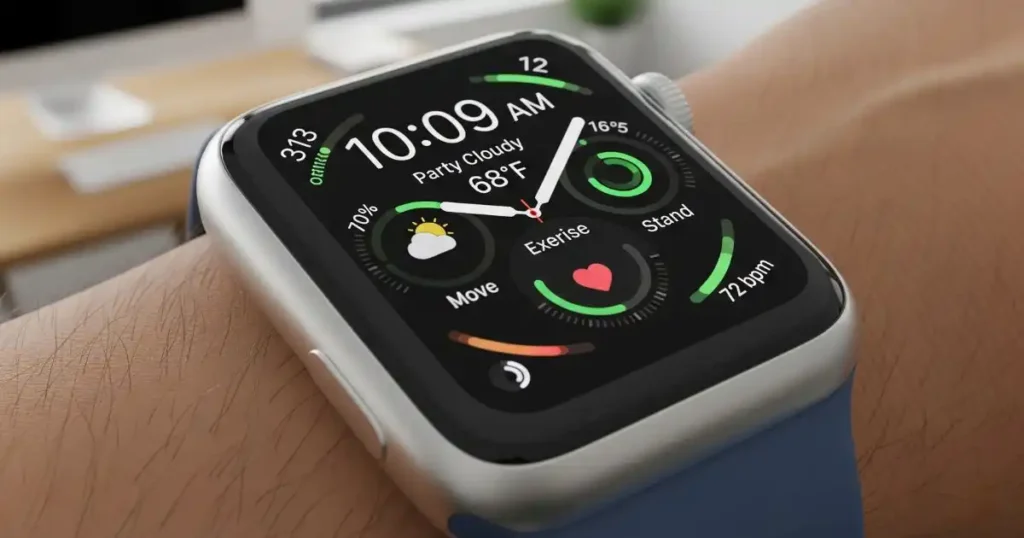
Perfect for beginners or those on a budget, the SE (2nd Gen) gives you all the essential Apple Watch fitness features—including activity rings, workout tracking, heart-rate monitoring, and sleep tracking—at a much lower price. It skips some advanced health sensors but still delivers excellent value for everyday fitness tracking.
Best Fitness Apps to Use with Apple Watch
The default Apple Watch fitness app is great, but pairing your watch with third-party apps can unlock even more potential:
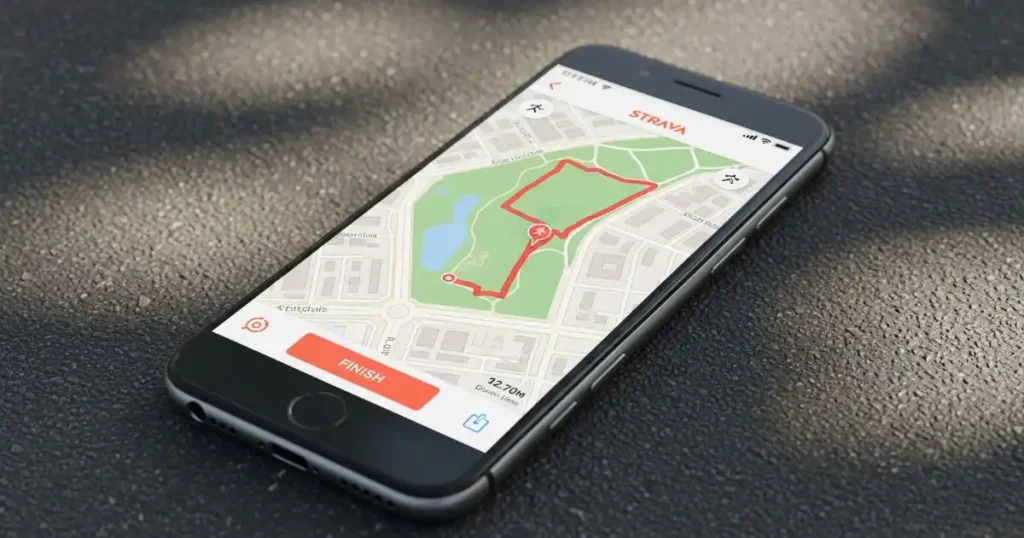
This app is perfect for runners, cyclists, and triathletes who enjoy tracking performance and competing with a community. Strava allows you to log your workouts, monitor progress over time, and participate in challenges with friends or global users. The social aspect keeps you motivated while the detailed analytics help you improve your endurance, speed, and overall fitness.
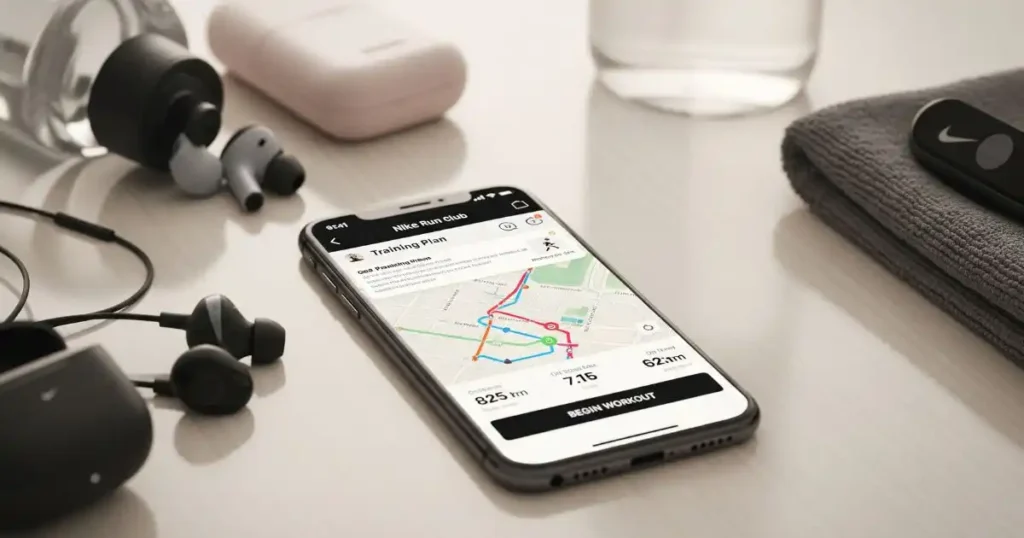
Ideal for those who want a guided running experience, Nike Run Club offers personalized coaching plans that adjust to your fitness level. The app provides real-time audio feedback, pacing guidance, and motivation during runs. With seamless Apple Watch integration, it tracks distance, heart rate, and calories burned, making every run more structured and effective.
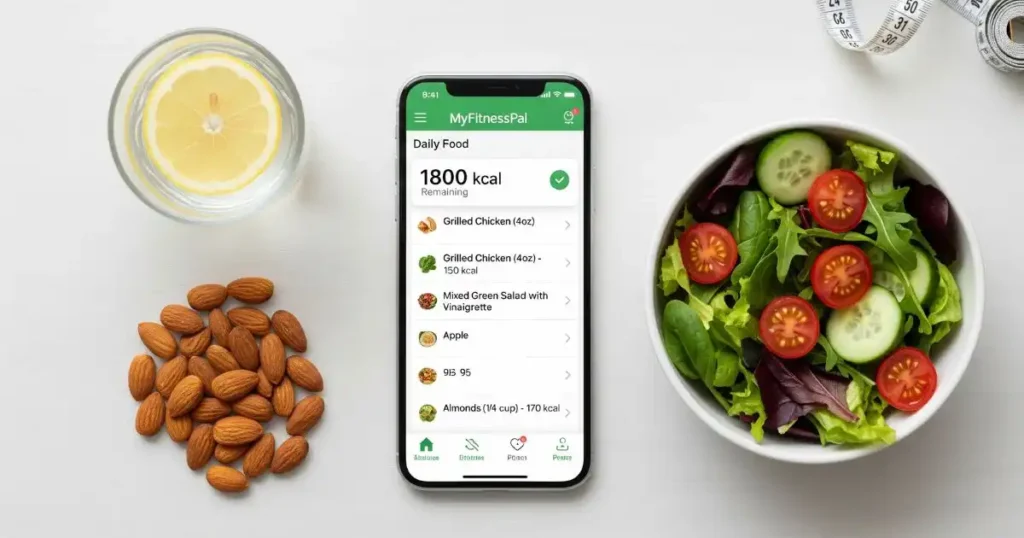
Fitness isn’t just about exercise; nutrition plays a huge role. MyFitnessPal helps you log meals, track calories, and monitor macronutrients to balance your diet with your activity levels. When synced with your Apple Watch, it gives a complete picture of your calorie intake versus calories burned, helping you reach weight loss, maintenance, or muscle-gain goals efficiently.

This app is designed for those who want heart-rate-based workouts. It shows you which heart rate zone you’re in during exercise (fat burn, cardio, peak) and helps you train smarter, not just harder. With Apple Watch integration, Zones provides real-time metrics that allow you to optimize your workouts for endurance, performance, or weight management.
How to Maximize Your Health Goals with Apple Watch
Getting the most from fitness tracking on Apple Watch means personalizing it to your lifestyle. Here’s how:
- Change Fitness Goals – Go to the Activity app on your watch → press and hold the screen → tap “Change Move Goal.” You can also adjust exercise and stand goals.
- Track Workouts Daily – Use the Workout app for cardio, strength, and flexibility training.
- Use Reminders – Apple Watch reminds you to stand, move, or complete your rings.
- Sync with Health App – See long-term trends in sleep, heart health, and calories burned.
Here is official apple guide: How to change fitness goals on Apple Watch.
Pros and Cons of Apple Watch as a Fitness Tracker
- Highly accurate heart-rate & cardio monitoring
- Wide workout options (swim, run, yoga, cycling, HIIT)
- Motivating Activity Rings keep you consistent
- Seamless iPhone + Health app integration
- Large ecosystem of apps and accessories
- Requires daily charging (18–24 hours battery)
- Works only with iPhone (not Android compatible)
- Advanced recovery tools (like HRV trends) are less detailed compared to Garmin
Who Should Buy Apple Watch for Fitness Tracking?
- Beginners: Easy setup, motivating rings, clear metrics.
- Busy professionals: Great for tracking activity during long desk hours.
- Casual athletes: Ideal for running, gym, cycling, and mixed workouts.
- Advanced athletes: Useful, but you may prefer Garmin or Polar for endurance sports..
Final Verdict – Is Apple Watch the Best for Your Health Goals?
The Apple Watch fitness tracker is more than just a smartwatch—it’s a powerful tool for tracking fitness, monitoring cardio health, and staying motivated. If you’re an iPhone user looking for an all-in-one device that combines style, health insights, and everyday convenience, Apple Watch is hard to beat.
For professional athletes, Garmin may still lead in advanced recovery analytics and battery life, but for everyday health goals, the Apple Watch is a top choice.
Bonus Resource for Busy Professionals
If you’re a busy professional struggling to find time for fitness, we’ve created a free 30-minute home gym workout PDF along with a diet guide to help you stay on track. This guide is designed specifically for people with hectic schedules, showing efficient exercises you can do at home and easy nutrition tips to complement your workouts.
Download it now and start tracking your progress with your Apple Watch fitness tracker. Pairing these exercises with the Apple Watch fitness apps and features we discussed will help you maximize results in minimal time.
Download Free 30-Minute Home Gym Workout & Diet Guide
FAQs
1. Does Apple Watch track cardio fitness accurately?
Yes, it uses heart rate and movement data to estimate VO₂ max. While not as detailed as lab tests, it’s reliable for everyday tracking.
2. Can Apple Watch help with weight loss?
Yes, by tracking calories burned, workouts, and integrating with nutrition apps like MyFitnessPal.
3. How often should I wear an Apple Watch for accurate tracking?
Daily wear is recommended to get consistent activity, cardio, and sleep data.
4. Can Apple Watch replace a chest strap heart monitor?
For casual fitness, yes. But athletes may still prefer chest straps for maximum accuracy.
3 thoughts on “Apple Watch Fitness Tracker Review: Is It the Best for Your Health Goals?”